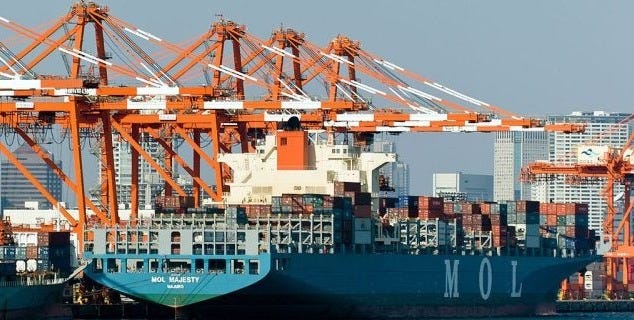Tariffs, The Kind You Clean with a Mop and Bucket
The main components of the administration's economic policy continue to reign supreme: confusion, chaos, uncertainty.

With The Court of International Trade temporarily putting most of the Trump tariffs in timeout, the main components of the administration’s economic policy continue to reign supreme: confusion, chaos, uncertainty.
Two broad categories of tariffs implemented by the Trump administration have been halted by the court’s decision.
Trump’s global tariffs announced on April 2, which affected nearly every country around the world, have been struck down. These tariffs imposed a 10 percent tax on imports from nearly all countries. Initially, Trump said those tariffs would rise to much higher rates for dozens of countries. But those so-called reciprocal tariffs on more than 75 countries were later delayed and not scheduled to take effect until July. Trump also imposed a higher rate on imports from China, which was lowered after negotiations between the two countries.
The court also halted 25 percent tariffs that Trump — citing an emergency over illegal migration and drug trafficking — imposed on many products from Canada and Mexico, and tariffs of 20 percent on most goods from China for its alleged role in facilitating production of the opioid fentanyl.
The court also appears to have halted Trump’s order that removed duty-free shipping for small-value packages, or “de minimis” shipping previously used by retailers such as Shein and Temu, on goods from China, though the immediate effect on de minimis was unclear.
Trump’s tariffs on specific products such as steel, aluminum and automobiles are not affected and are still in effect. Trump did not use the emergency powers to implement these levies, instead relying on a 1962 trade law. Typically, the commerce secretary or another government official has to investigate whether the imports affect national security under this law, so the process takes longer than using emergency powers.
That last bit is the key to this whole mess, the President using “emergency powers” for something that is only an emergency for an administration that has we want what we want, and we want it right now, now give it to us or else as guiding judicial philosophy.
President Trump’s long-proclaimed desire to use tariffs has given him one of his life’s main goals; the entire world fiscal system revolves around him, his whims, and his wants. He can say something and have the governments of the world, the markets, and the media immediately adjust their orbits around the new gravity well he just spun out. Then on to the next whim. Lather, rinse, repeat. Donald Trump has never been happier.
But the global economy isn’t designed to work this way for good reason. Aside from the legality of Trade Policy via Truth Social, and aside from congress’s complete abrogation of its delineated powers when it comes to trade and the national purse, and aside from the bullwhip effects in the logistics system of goods and resources being started and stopped arbitrarily, and aside from…
No, actually, all those asides are the point. President Trump is doing whatever he wants because President Trump has been trained by the American system of government for a decade now that President Trump can do whatever he wants. Unlike his first term, where there were a handful of old guard functional adults in the administration that never lasted long but did check Trump’s worst impulses, there is no internal pushback to anything. That isn’t going to change. Congress has a slim majority GOP House that just passed the “big, beautiful bill” and a Senate GOP majority that now has to try and make the monstrosity work and pass. Checking the President on trade isn’t going to get any oxygen in those rooms no matter how asphyxiated the sycophant caucus of the GOP gets. But the occasional congress critter might do some crowing about it on a media hit occasionally, so there is that.
The only thing that has checked the Trump Administration’s tariff tear so far is when the bond market freaks out, which – rightfully – freaked out the administration. The judicial review whack-a-mole of injunctions, reliefs, overruling, and appeals is going to continue at a pace that is far slower than the dictates of a president that governs by dictates. Meanwhile the global economy that centers around the United States economic might has to try and adjust to an artificial obstacle course game show imposed by Trump where the rules change on a whim, the points don’t matter, and just the fact everyone else is running the course is enough for the administration to feel like it is winning bigly.
Chaos isn’t a ladder to those already at the heights of power; it is a cudgel, one that the American electorate voted for. That same electorate’s representatives in congress can’t seem to bother doing anything about it. Thus, we will all be getting what was voted for, good and hard, with only intermediate judicial and market-induced respites, until 2028 gets here.
The second worst thing you can do to an economy is bad policy. The worst possible thing you can do is perpetual uncertainty. Creating economic chaos just for the amusement and aggrandizement of a lame duck president? We’re going to need a whole new term for that one.




